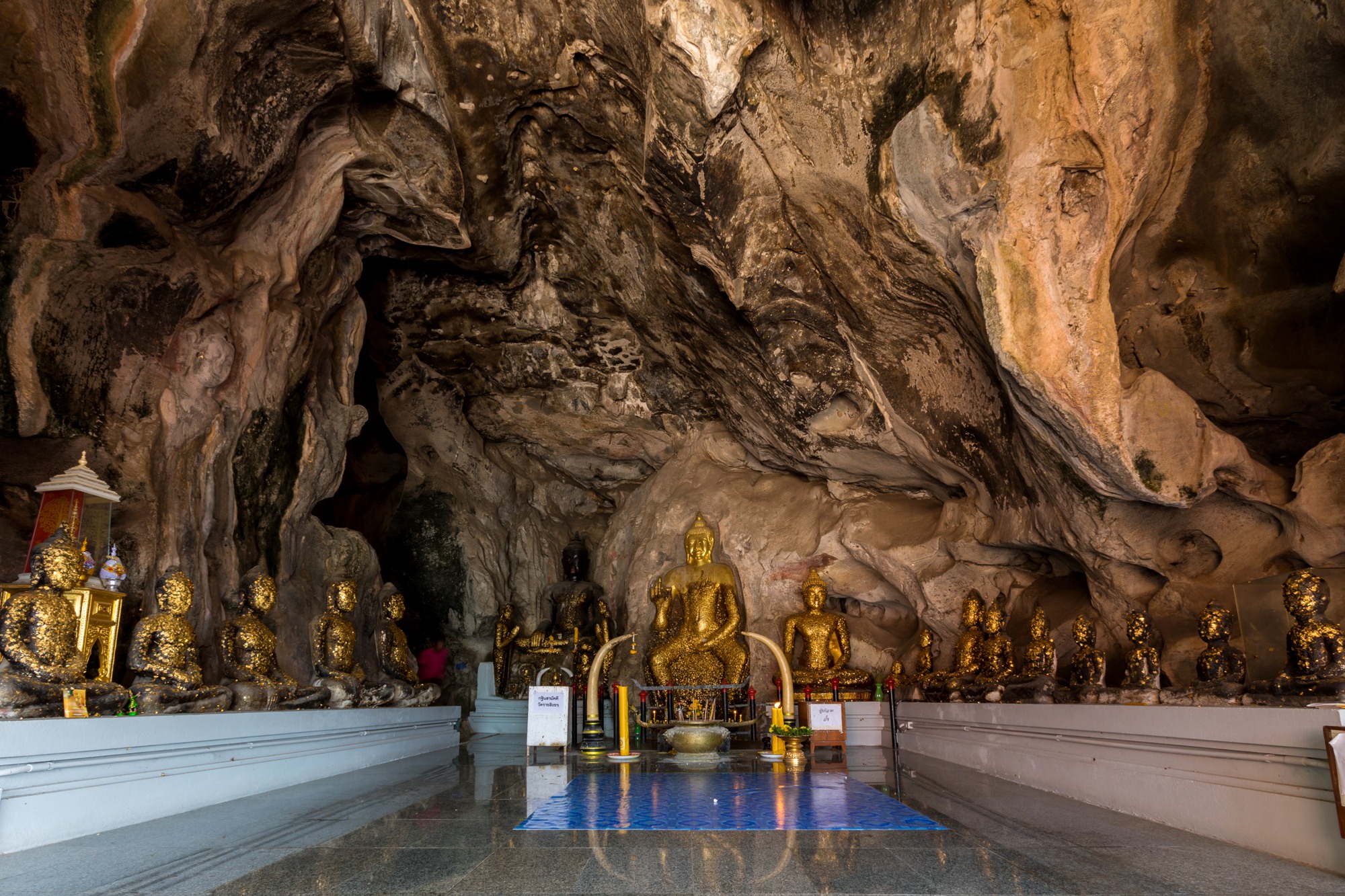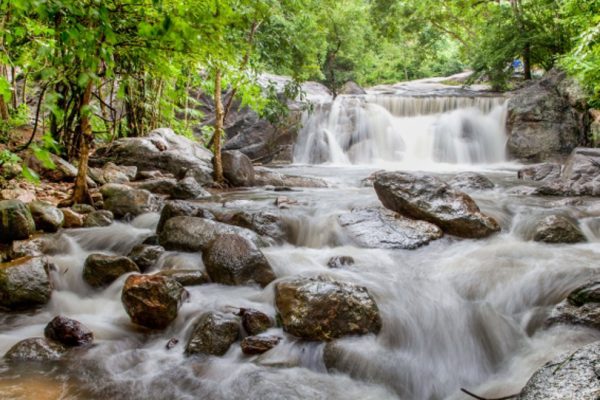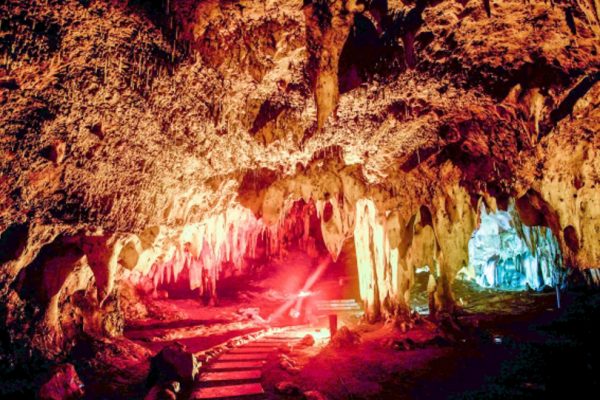
Tham Ruesi Khao Ngu
Tham Ruesi Khao Ngu is 8 km. from the town to the west and is located in Khao Ngu Park. Before reaching the top of Khao Ngu mountain, there is a cave called “Tham Ruesi” where a giant Dvaravati-style Buddha image giving a sermon is on the wall of the mouth. The image is commonly known as Phra Buddha Chai of Tham Ruesi Khao Ngu. The left hand is on a shin and the face is flat with curvy eyebrows like the shape of a crow’s wings, bulging eyes, a flat nose, thick lips, a big hair knot with lotus shape halo inscribed the name of the hermit protecting Khao Ngu mountain in Indian which is the origin of the name “Tham Ruesi”. Another word inscribed is “Gupta”, a common surname in the time of the Gupta Empire; therefore, it is assumed that the Buddha image in Tham Ruesi might have been built in the Davaravati period, the same time or not so long after the Gupta period in India. There are many other Ayutthaya art sandstone Buddha images inside the cave.On the top of the mountain, installed the Buddha’s footprints. On one side of the top is Tham Fa Tho. There are stairs leading to two places: Tham Fah Tho and the footprints’ place.The footprints made of laterites were placed inside Viharn, a rectangle building located on the top at the height of 128 metres. The original building was so worn out that a pavilion was built on top of it. Near the base of the footprints, situated 5 red sandstone Buddha images and a number of parts of Buddha’s images assumed to be built in Ayutthaya period. However, the period the footprints were made is unknown.Tham Fa Tho is near Khao Ngu cave and is 250 metres away from Tham Ruesi Khao Ngu to the west. It is where Buddha images, hermit’s images and parts of sandstone Buddha images. Inside the cave, there are wall sculptures on the south wall, such as a reclining Buddha image with halo all the way up to the painting of celestial assembly and a stucco of a tree with two disciples. The elements are like those of the nirvana of the Buddha in Jam Cave. In Tham Fa Tho, the Buddha’s image faces its head to the mouth to the cave. Other Buddha’s images are on the left of a Gods picture similar to a sculpture in Ajanta Caves in India which was built around 600 AD. There is a ceremony held annually to worship on the first day of November.Open daily from 08.00-17.00


